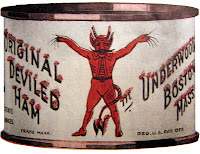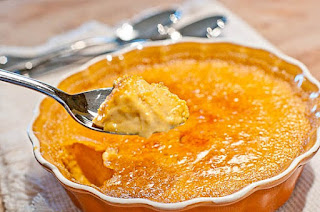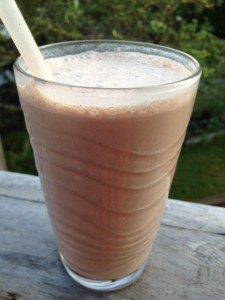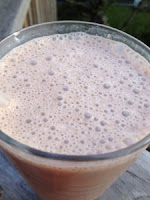Each year, for as long as we can remember, our neighbors Margarette and David have hosted an open house the Sunday before Christmas. The entire neighborhood stops by for warm apple cider and a buffet of sweet and savory bites. The one treat we always look forward to are Margarette’s little deviled ham turnovers, so after many years I finally asked for the recipe. I am so glad I did because not only are the ham tartlets wonderful, Margarette’s pastry dough is now my go-to recipe for pies and cookies!
 For a novice baker, this is the most forgiving dough to work with. The cream cheese allows this pastry some elasticity, but still produces tender and flaky results.
For a novice baker, this is the most forgiving dough to work with. The cream cheese allows this pastry some elasticity, but still produces tender and flaky results.- ½ cup (1 stick) unsalted butter, room temperature
- ½ cup cream cheese, room temperature
- 1 cup flour, plus more for rolling out the dough
- Pinch of salt
Process the butter and cream cheese together in a food processor, electric mixer, or by hand to thoroughly combine.
Add the flour and salt. Process just until combined and the dough holds together in a ball. Turn the dough out onto a well-floured surface. Divide into 2 pieces. Flatten into disks and wrap each in plastic wrap. Refrigerate for at least 30 minutes before rolling out.
If the dough is chilled overnight, take it out 15 minutes before rolling out.
If the dough is chilled overnight, take it out 15 minutes before rolling out.
Rotate the disk and roll to the top and bottom edges again. Re-flour the work surface and rolling pin, turn the dough over, and continue to roll the dough from the center out to the edges. Turn over and roll again, rotating the disk to ensure even rolling until the dough is about 12 inches in diameter, thin but not transparent. Using a biscuit cutter (or an empty aluminum can or juice glass), cut the dough into rounds for filling.
 Devilish Filling:
Devilish Filling:- ½ cup (or 4.25 oz. can) deviled ham
- ½ teaspoon mayonnaise
- ½ teaspoon Dijon mustard
- ½ teaspoon hot paprika
- Pinch dry mustard
Moisten the edge of the pastry with a finger dipped in a little water, and then fold the empty half of the dough over the filling. Crimpthe edges together using the tines of a fork. Place on the prepared baking sheet. Refrigerate while you make the remaining turnovers, putting each one on the sheet as it is assembled.
Place a baking rack in the center of the oven. Brush each turnover with a little milk or egg white if desired. Bake on the center oven rack for 10 minutes. Reduce the oven temperature to 375 degrees F, and bake for about 20 more minutes, or until golden brown. For even browning, rotate the sheet from front to back halfway through baking.
Transfer the turnovers to a wire rack, and let them cool slightly. Serve while they’re still warm.














